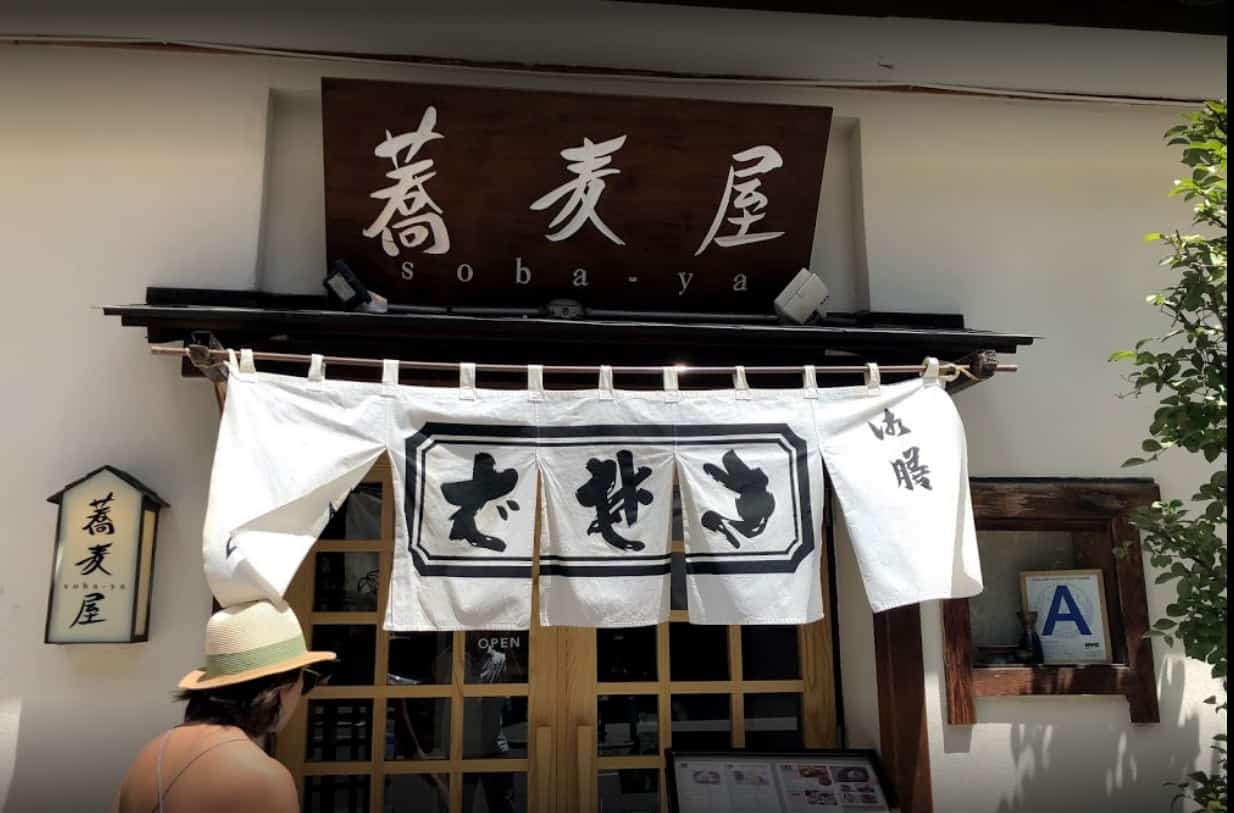I’ve never had soba that I didn’t enjoy, but it’s nice to know that the chefs at Sobaya (sometimes rendered soba-ya) at 229 E 9th Street take it more seriously than most.
They handmake the noodles every day from organic buckwheat flour imported from Nagano, and then “simmer high-quality bonito and kelp in charcoal-filtered water to make a dashi broth,” to which they add Higeta Soba-zen, “three times more expensive than regular soy sauce.” They claim to be the only U.S. restaurant using the brand.
Those who admire the clean, precise flavors of Japanese cuisine may seek to enhance their experience at Sobaya by keeping all this in mind. Or if they prefer, they can just scarf down some noodles, which is what I did.
Serving lunch and dinner in a pleasant wood-accented dining room at 229 E 9th Street, Sobaya is a modestly upscale yet casual restaurant, very popular but somehow not too crowded, boasting an extensive menu of traditional foods (fried, grilled, and raw). With its soothing elevator music, it could be a nice, cool place for cold soba in the summer, or a nice, cozy place for hot soba in the winter.
When I visited with two friends for dinner, it was one of the last super-hot days in September, and I was too dehydrated to drink anything but water, but they shared one of many sakes on the menu. They both ordered the Early Bird Special, offered from 5:30 to 7 pm, which at $22 must be a steal in the East Village. There are cheaper noodle shops, but Sobaya offers the (debatable) pleasure of paying a little extra for a degree of unobtrusive formality and culinary rectitude.
The special comes with an appetizer of vegetables in neat bento-style piles (burdock root, pumpkin, green beans, and lotus root – the last being my favorite for its soapy flavor and starchy-watery crunch), inarizushi (rice-stuffed tofu pouches), shrimp and vegetable tempura, basic hot or cold soba or udon, and a dessert of vanilla ice cream with strawberry sauce. The menu doesn’t mention the inarizushi, so it’s an even better value than it first appears.
This was clearly the best option, but to mix things up, I ventured off-piste and for myself ordered a pair of less familiar à la carte items: the tuna yuba maki ($11.50), a kind of low-carb sushi roll, with soft hunks of fish packed into raw bean curd skin over a generous (even excessive) pat of citrusy avocado paste; and for my main course, the toro toro soba ($22), with nameko mushrooms, okra, grated mountain yam, and seaweed root.
Whereas mori soba (the standard cold variety) arrives on a flat surface with a separate bowl of broth for dipping, and kake soba (the standard hot variety) begins already sitting in a bowl of broth, hiyashi soba – the kind that has a bunch of toppings – comes in a bowl with a pourable teapot of cold broth on the side, allowing the diner to determine for himself the best level of immersion for his noodles. For me, this is too much pressure; I’d rather have someone else decide.
I had chosen the toro toro soba mostly because okra makes me nostalgic for the years I lived in North Carolina, where it shows up commonly in the local cooking. It’s a wonderful vegetable but has to be treated carefully lest it turn into mucus. Intriguingly, my soba dish seemed to lean into its snotty character on purpose, with each of the ingredients (especially the yam) contributing its own sliminess to the mixture. I probably wouldn’t get it again, but it was fully unlike anything I’d had before, and how often does that happen?









